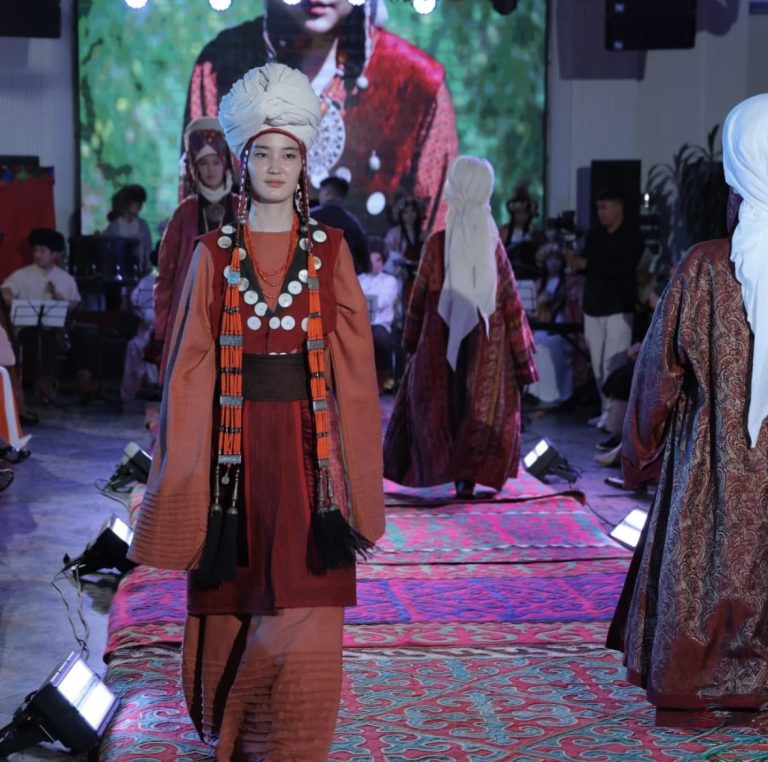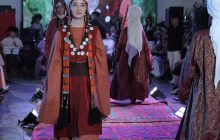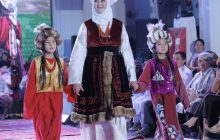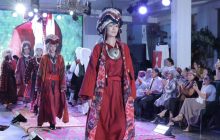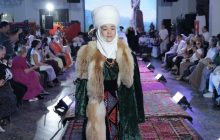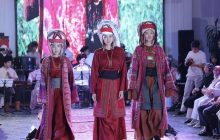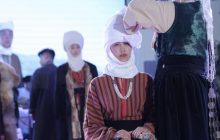An exhibition in Bishkek highlights the symbolic and artistic legacy of the Kyrgyz women’s traditional headdress.
Author: Asylbekova Saykal
This summer the Pishpek restaurant hosted the exhibition “Kyrgyz Elechek — The Heart of the Silk Road,” presenting a new collection by ethnodesigner Asel Kalkanova. The event was organized with the support of the Embassy of Hungary in the Kyrgyz Republic.
The exhibition opened with a speech by the Hungarian Ambassador, Mr. Sándor Dorogi. He expressed his appreciation for the collaboration with Kalkanova and emphasized the importance of cultural exchange:
“We admire the ancient traditions of the Kyrgyz people. There is beauty in diversity. By supporting events like this, we promote not just fashion or heritage, but respect, dialogue, and mutual understanding between our nations.”
The event brought together diplomats, historians, designers, journalists, and cultural figures. At its center was the elechek, the traditional headdress worn by married Kyrgyz women. More than a garment, the elechek is a living symbol — of status, memory, and inner strength. Wrapping of the elechek is a ritual: each layer reflects age, social role, and a deep reverence for one’s ancestors.
Kalkanova presented seven distinct styles of elechek, each with its own story and cultural meaning. The evening culminated in a powerful symbolic act — the designer herself took the stage and demonstrated how to wrap the elechek on her own head. It was a personal gesture, highlighting her deep connection to the cultural heritage she is striving to preserve and pass on.
A particularly emotional moment came with the appearance of actress Elina Abai kyzy, best known for her leading role in the film Kurmanjan Datka. Dressed in a traditional elechek, she became a living tribute to the strength of Kyrgyz women — women like Kurmanjan herself and those who inspired this collection.
For Kalkanova, the elechek is more than a piece of clothing — it is a language of memory. The exhibition was not just a display of costume but a quiet exploration of identity. Through fabric, pattern, and the silent choreography of wrapping, a story unfolds — one in which women are not only guardians of tradition but also carriers of deeper meaning.
In every fold — a trace of time.
In every image — a voice from the past, speaking with clarity and strength.
